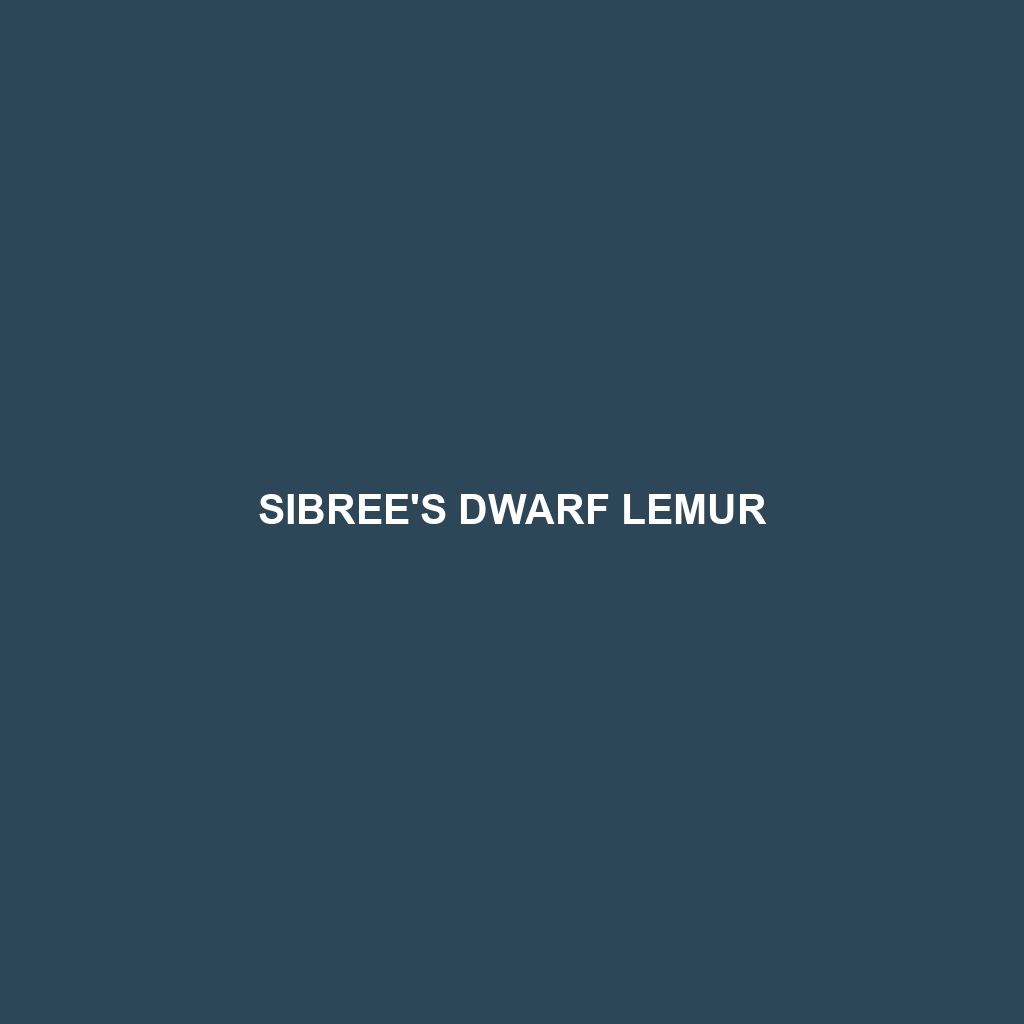Sibree’s Dwarf Lemur
Common Name: Sibree’s Dwarf Lemur
Scientific Name: Cheirogaleus sibreei
Habitat
Sibree’s Dwarf Lemur is primarily found in the lush rainforests of Madagascar, particularly in the eastern rainforest regions. This nocturnal primate thrives in areas rich with bamboo and dense vegetation, typically inhabiting elevations between 600 and 1,200 meters. The unique habitat supports its lifestyle, providing essential cover and food resources.
Physical Characteristics
Sibree’s Dwarf Lemur is a small primate, measuring about 24 to 30 centimeters in length, not including its long tail, which can reach up to 22 centimeters. The fur is dense and soft, usually exhibiting a grayish-brown color with lighter underparts. Notable features include large, expressive eyes adapted for nocturnal activity, and a tail that helps with balance and agility as it moves through the trees.
Behavior
Typically solitary or found in small family groups, Sibree’s Dwarf Lemurs are predominantly nocturnal, active during the night when they forage for food. Their behaviors include vocalizations, tree climbing, and using scent markings to communicate with others. Their adaptation to a nocturnal lifestyle makes them fascinating subjects for research into primate behavior and ecology.
Diet
Sibree’s Dwarf Lemur primarily feeds on fruits, flowers, and leaves, with a particular fondness for nectar. During the wet season, they consume a variety of seasonal fruits, while in the dry season, their diet shifts to leaves and bark. This diverse diet is crucial for their survival and highlights their role in seed dispersal within their habitat.
Reproduction
Breeding for Sibree’s Dwarf Lemurs occurs during the rainy season, roughly between September and November. Females typically give birth to a single offspring after a gestation period of approximately 60 to 70 days. Mothers are highly attentive to their young, with infants learning the necessary skills for survival from their parents in the months following birth.
Conservation Status
Sibree’s Dwarf Lemur is currently classified as Vulnerable by the International Union for Conservation of Nature (IUCN). Threats to its survival include habitat destruction due to logging and agricultural expansion, as well as hunting. Conservation efforts are critical for preserving this unique species and its habitat.
Interesting Facts
Sibree’s Dwarf Lemur is named after the prominent zoologist Dr. John Sibree, who contributed significantly to the study of Malagasy wildlife. They are one of the few primates that undergo torpor, a state of reduced metabolic activity, enabling them to survive periods of food scarcity.
Role in Ecosystem
As important seed dispersers, Sibree’s Dwarf Lemurs play a vital role in maintaining forest biodiversity. By feeding on various fruits and plants, they contribute to the growth and spread of trees and shrubs in their ecosystem. Their presence supports the overall health of the rainforest habitats in which they reside, illustrating their significance in Madagascar’s complex ecological network.
